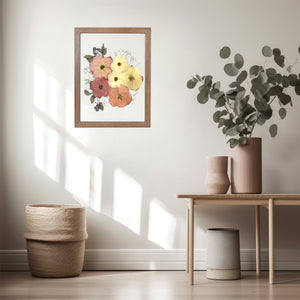What can you expect with preserving your flowers in resin?
Flower Drying
When creating any of our keepsakes, it is crucial that the flowers are completely dry before being poured with resin. This is because any moisture trapped within the flowers can cause them to rot and decay over time, ruining the overall aesthetic of the piece. Additionally, resin does not work well with moisture. By ensuring that your flowers are thoroughly dried before incorporating them into your keepsake piece, we can create a stunning and long-lasting piece that will be enjoyed for years to come.
We use silica gel as a method for drying our client’s flowers, as it helps to maintain their original shape and color. However, it is important to note that not all flowers dry well and some colors may change during the drying process. For instance, red roses may dry to a burgundy color, while white roses may dry to a cream or yellow tone. Blush roses may also lose their pink tone and dry to a yellow color. Additionally, many tropical flowers do not dry well. Tropical flowers such as white anthuriums may dry to a brown color and become extremely thin and fragile. It is also important to note that succulents do not dry well and should not be used in resin pieces as moisture can cause them to rot.
Bruising on Flowers
Floral bruising is a natural occurrence that can happen when preserving flowers in resin. These transparent spots can appear on flowers after resin is poured on them, and are most commonly seen in roses, tropical flowers, and lighter color flowers. Don’t worry, they are not holes in your flowers. While bruising can be an unwanted effect for some, it is important to note that it is a natural part of the preservation process. However, if you prefer a more uniform look to your preserved flowers, we highly recommend color enhancing as an option. This process can minimize the appearance of bruising and help to maintain the original beauty of your flowers.
Resin Ambering
Although resin art produces breathtaking results, the nature of this medium introduces complexities. Occasionally, resin pieces may exhibit imperfections like bubbles due to its unique properties. Additionally, over time, resin can naturally develop an amber hue, particularly when consistently exposed to sunlight or heat. To offer alternatives free from these influences, we recommend exploring our other preservation styles, such as exquisite pressed frames or elegant shadowboxes.
-
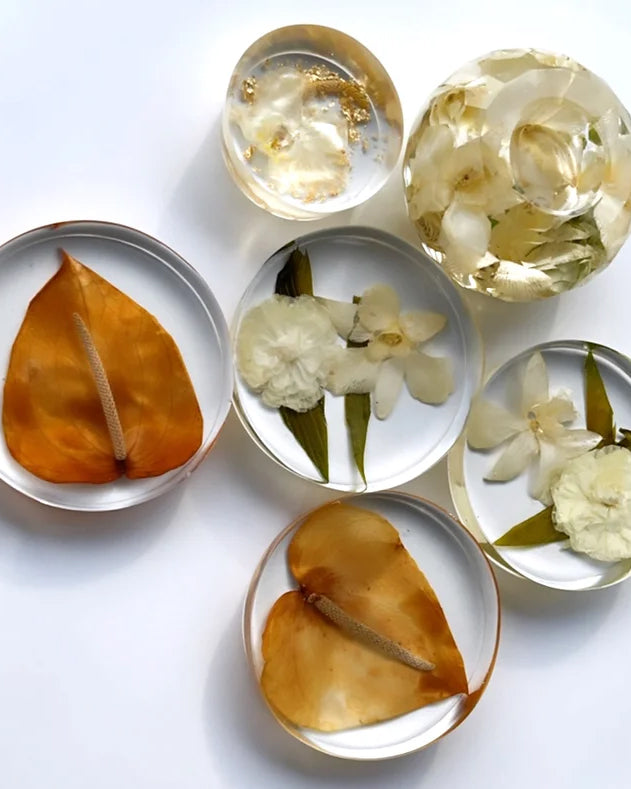
Example of a White Anthurium when dry.
-

Example of a White Anthurium when dry.
-
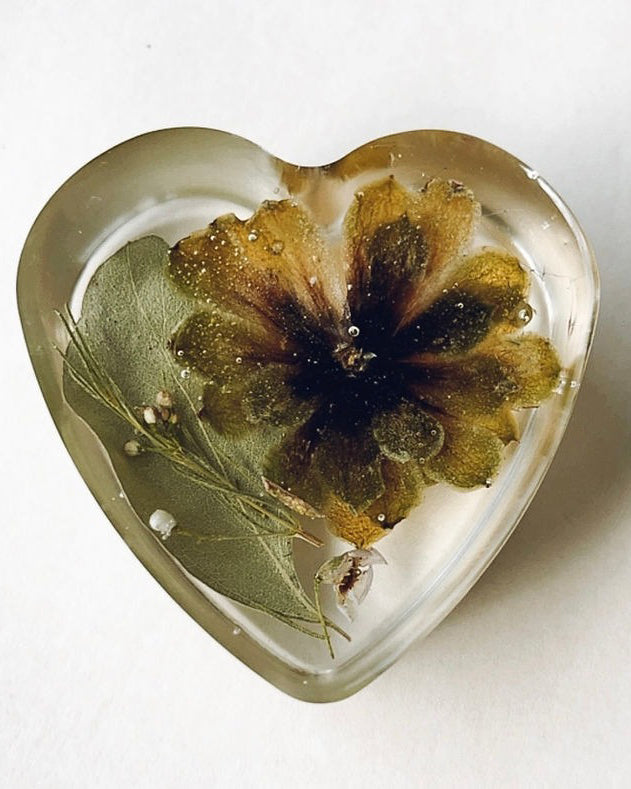
Example of a succulent when dry.
-
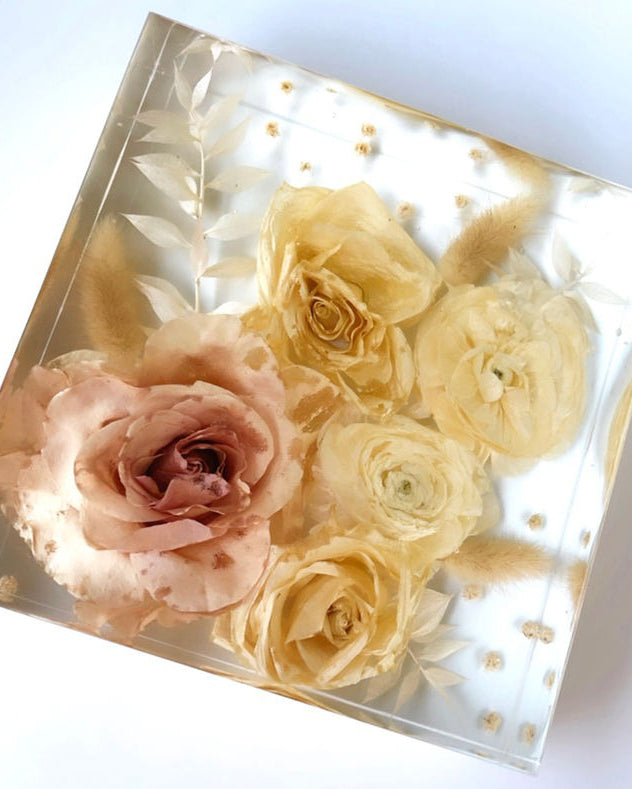
Example of white roses, white ranunculus and light pink rose when dry and with bruising.
-
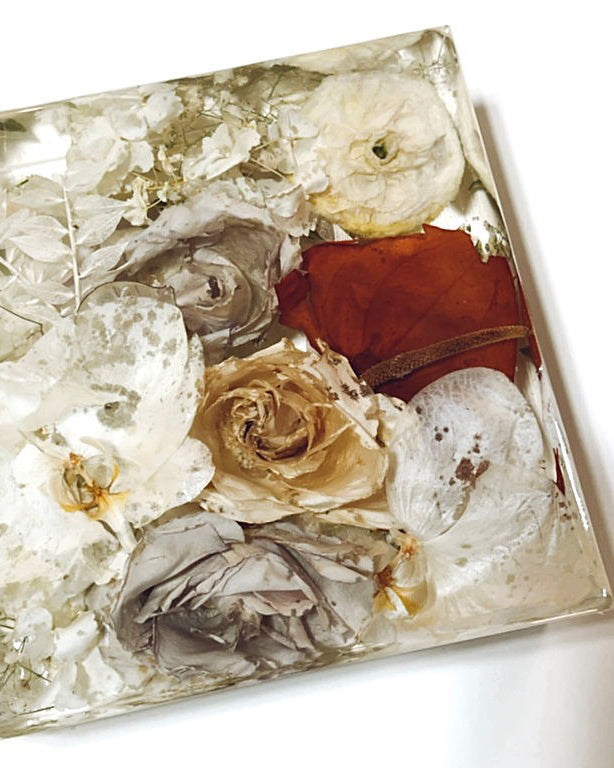
Example of white orchids, blush roses, white rose and white anthurium when dry and with bruising on orchids and roses.
-
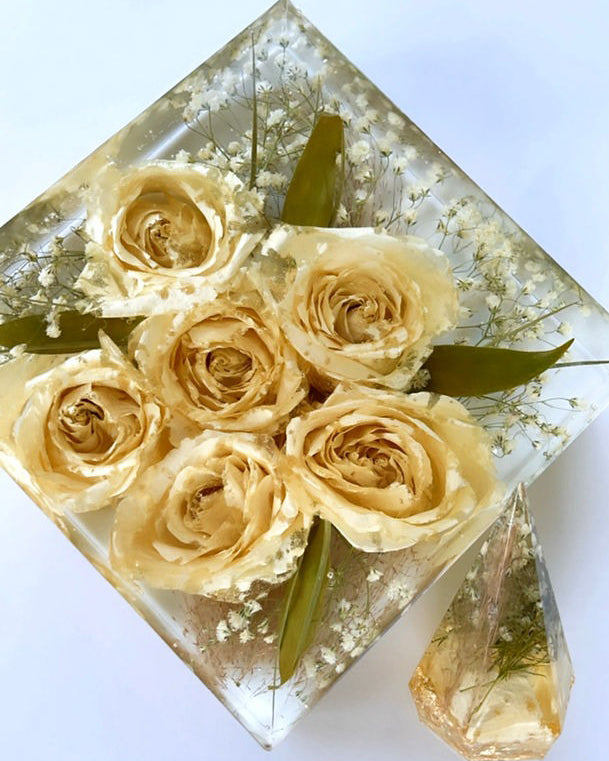
Example of white roses when dry and with bruising.
-
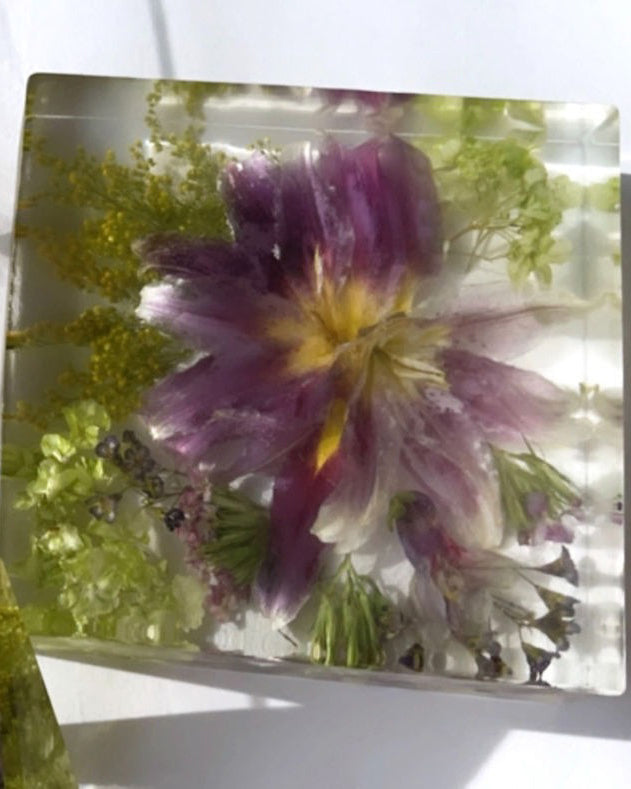
Example of pink Stargazer Lilies dried on a square block.
-

Example of bruising on roses
-
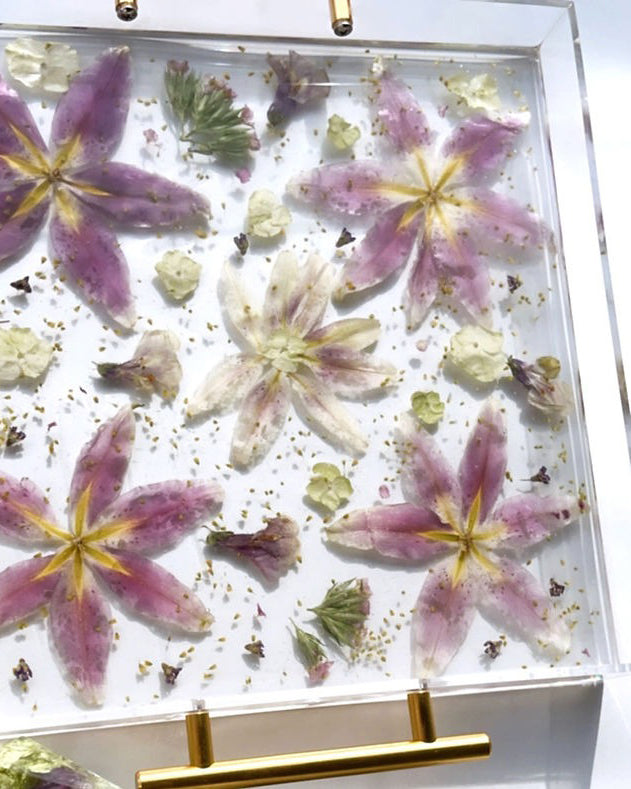
Example of pink Stargazer Lilies dried and flattened on a tray.
-

Example of tropical flowers in resin. Tropical flowers dry very thin and delicate, so many flowers especially white flowers look slightly transparent. Color enhancing will help with this.
-
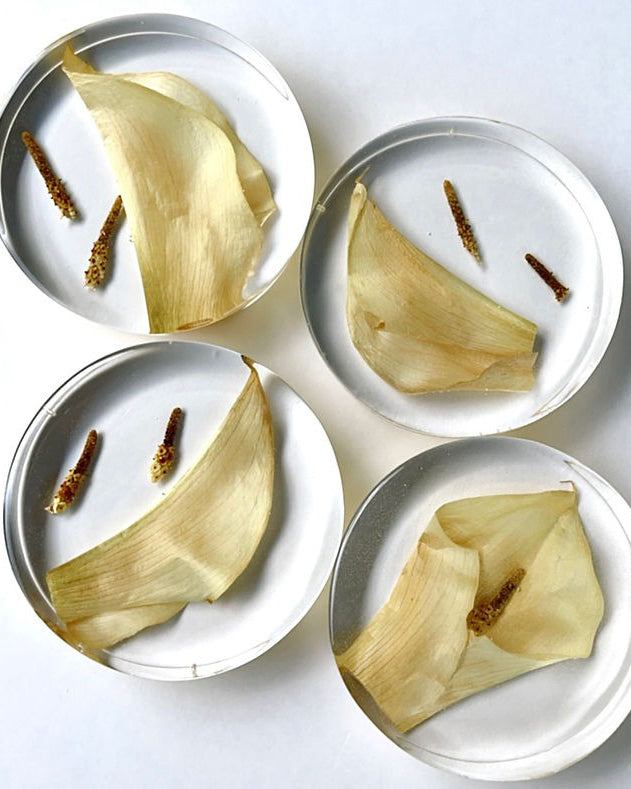
White Calla Lillies do not dry white, they dry yellow.
-
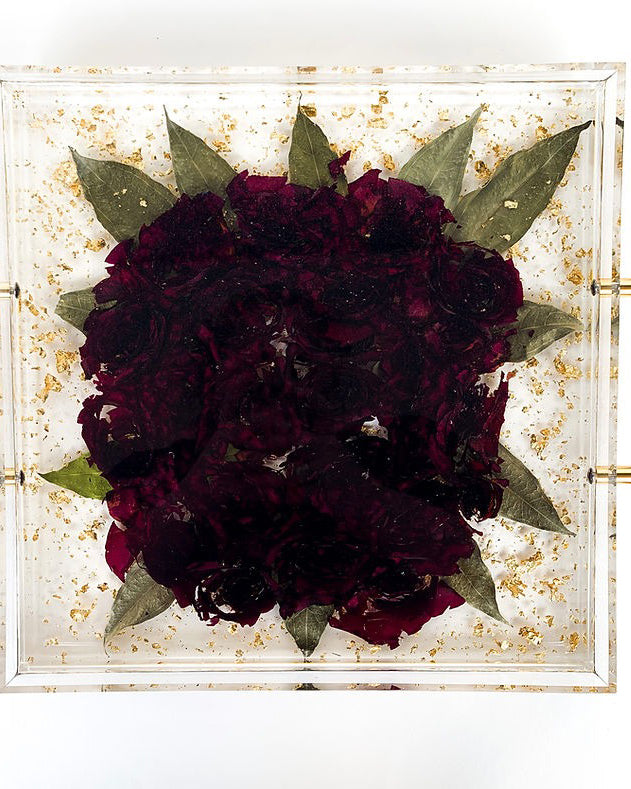
Example of red roses dried and in resin

